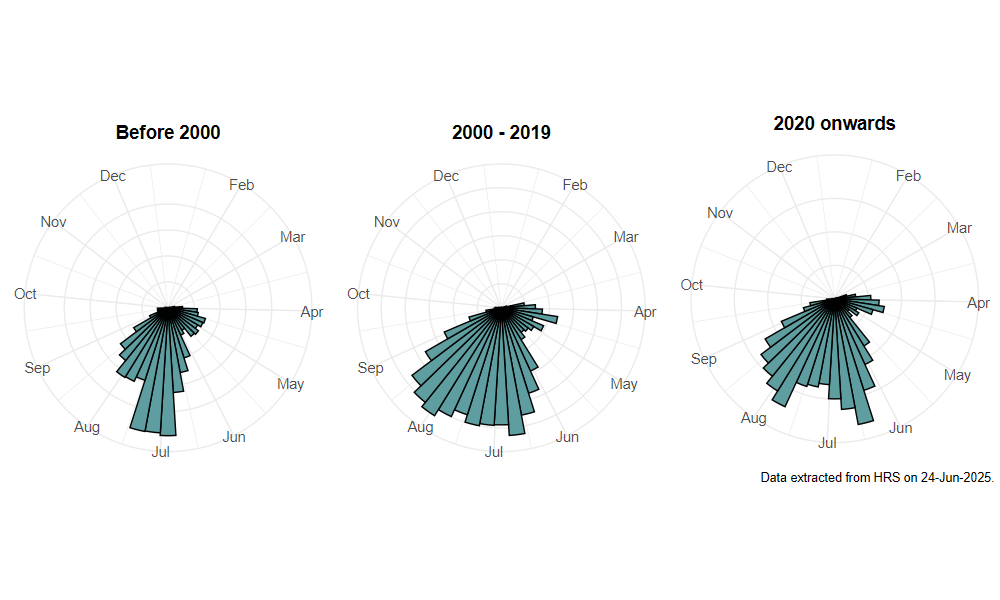Eristalis intricaria (Linnaeus, 1758)
Identification
Identification difficulty = 1. ![]()
![]() according to Ball & Morris, 20241
according to Ball & Morris, 20241
Synonymy
Eristalis intricarius (Linnaeus, 1758) in Stubbs & Falk (19832, 20023). The issue here is whether the generic name Eristalis should be considered as masculine or feminine and hence dictate the '-us' or '-a' ending for the specific name. Although ICZN ruled in 1993 that this and some other genera should be treated as feminine, this has not been accepetd by all authors, so you may still see the masculine form used in some publications.
Biology
The larva is of the 'long-tailed', aquatic type and occurs in semi-liquid organic matter such as organically enriched mud and waterlogged peat besides ponds and drains, but also in slurry pits and cow-dung. Adults are usually found visiting flowers, especially flowering shrubs, white umbels, Ragwort Senecio and thistles Cirsium, often in the vicinity of trees or scrub. Males can be seen hovering at some height above tracks and in woodland rides. This is a good bumble bee mimic with strong sexual dimorphism.
Flight period
The following plots show the number of unique records per week excluding those reported to be of immature stages.

Distribution
This is a very widely distributed species that is most frequently found in damper locations. It can be especially abundant in northern and upland environments.

Trends
The following plots show the Frescalo TFactor vs year and a map of the rescaled frequency (all records) for the species.
-
Ball, S., & Morris, R. (2024). Hoverflies of Britain and Ireland. WILDGuides (3rd ed.). Oxford: Princeton University Press. ↩
-
Stubbs, A., & Falk, S. (1983). British Hoverflies: An Illustrated Identification Guide (1st ed.). Reading: BENHS. ↩
-
Stubbs, A., & Falk, S. (2002). British Hoverflies An Illustrated Identification Guide (2nd ed.). Reading: BENHS. ↩